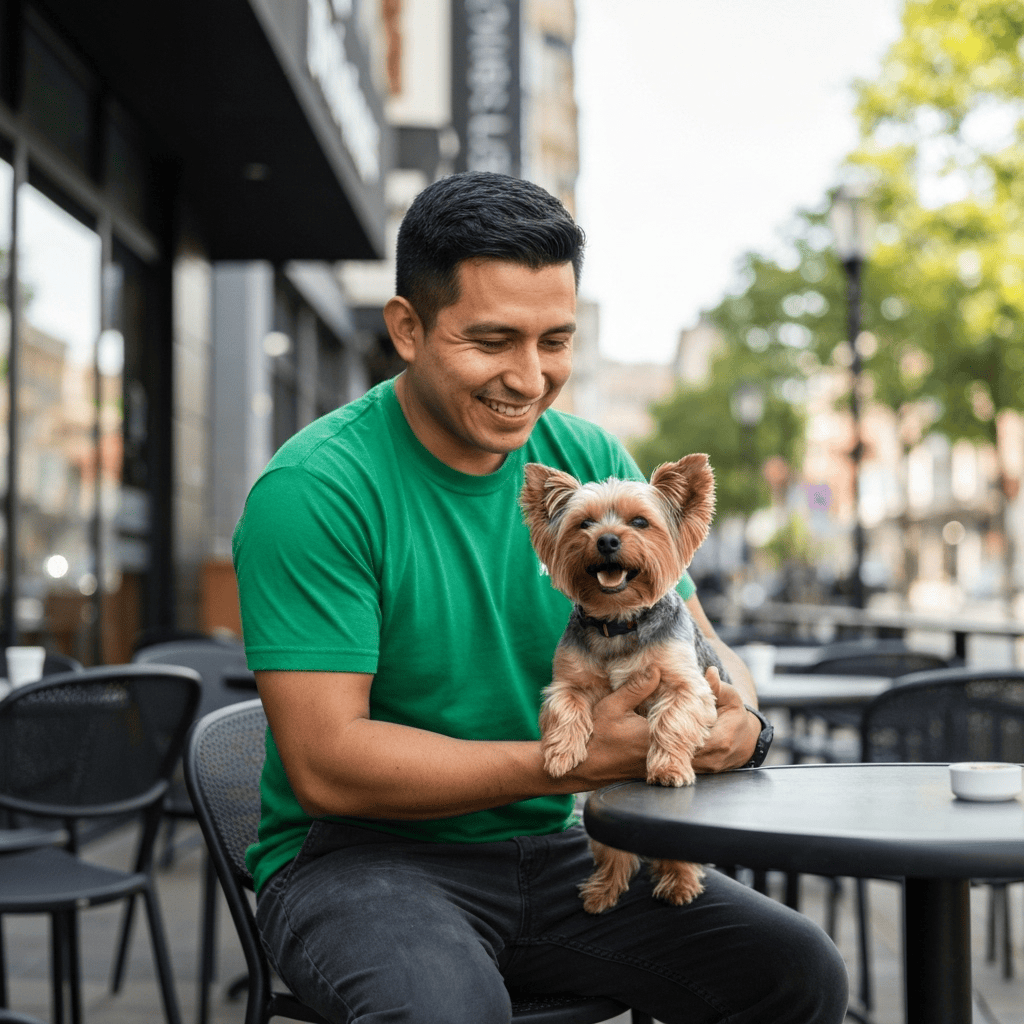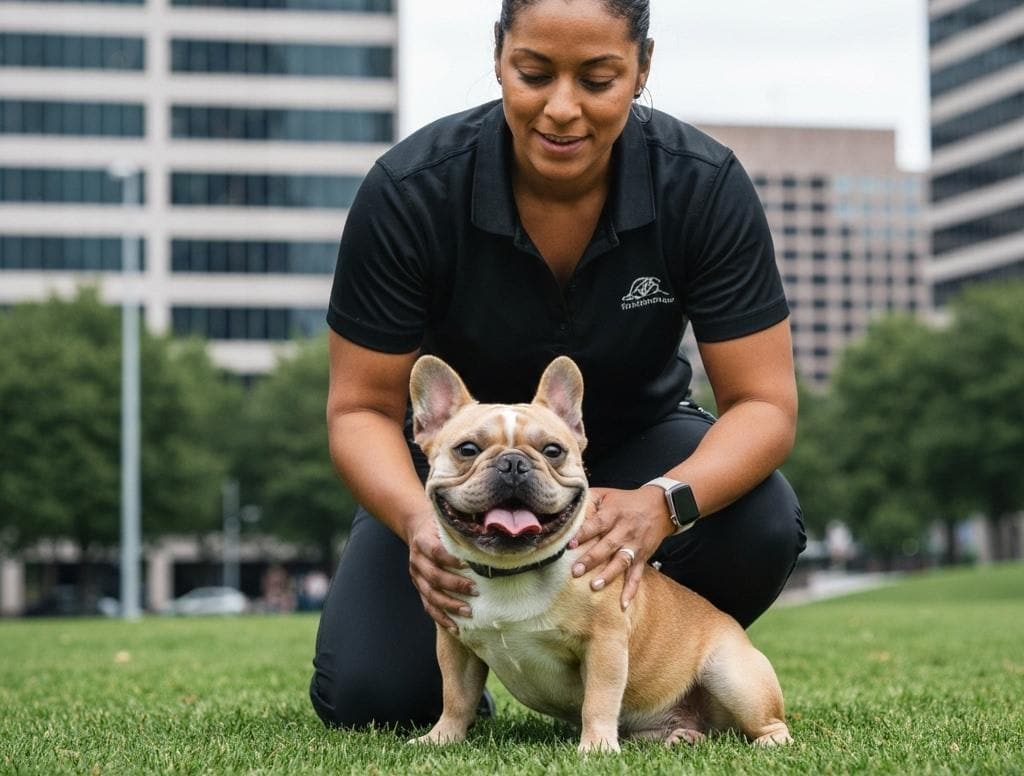Your Complete Guide to Choosing a Dog Trainer in Amarillo
Living with a dog in Amarillo means teaching skills that actually work when you’re walking through Thompson Park or heading out to Palo Duro Canyon for the day. Your dog needs to handle everything from kids playing baseball to cyclists zipping past on the trails.
The right trainer understands what life looks like here in the Texas Panhandle. They’ll help your pup learn to stay calm when there are distractions and be polite whether you’re at a quiet neighborhood park or a busy community event.
What Makes a Good Dog Trainer
Start by looking for someone who uses positive reinforcement and can help you with the everyday situations you actually face in Amarillo. Your dog should learn to walk nicely on a leash around busy parks, greet people politely at pet-friendly patios downtown, and stay focused even when there’s a lot going on around them.
While Texas doesn’t require trainers to have special licenses, good ones often pursue certifications that show they’re serious about doing things right. Ask about credentials like KPA-CTP, CPDT-KA, IAABC-CDBC, CBCC-KA, or CTC. These show the trainer has studied modern, humane methods and keeps learning.
The best trainers will want to practice in real places, not just in a sterile classroom. They might start at your house, then move to a quiet corner of a park, and eventually work up to busier spots as your dog gets better at listening.
Training Methods That Actually Work

Good trainers in Amarillo stick to methods that are both effective and kind to your dog.
Positive reinforcement means rewarding the behaviors you want to see more of. When your dog sits politely instead of jumping on visitors, they get praise and treats. This works great for puppies learning basic manners and older dogs picking up new skills.
For dogs who get nervous or reactive around other dogs or loud noises, trainers use desensitization and counterconditioning. This means gradually helping your dog feel better about things that used to worry them, like the sound of skateboards or seeing other dogs at the park.
Management is about setting your dog up for success. This includes things like using a crate when you can’t supervise, keeping your dog on a long line for safety while they’re learning recall, or using baby gates to keep them out of trouble at home.
Real-world proofing means practicing commands around increasing distractions. In Amarillo, that might mean working near the baseball fields at John Stiff Park or along the busier walking trails once your dog has the basics down.
Stay away from trainers who rely on scaring or hurting dogs to get results. Those old-fashioned methods might seem to work quickly, but they often create new problems and don’t build the trusting relationship you want with your pup.
What Training Costs in Amarillo
Prices depend on the trainer’s experience, how long sessions last, and whether you want private lessons or group classes. Here’s what most dog owners around here are paying:
| Service Type | Typical Price Range | What You Get |
|---|---|---|
| Group classes (4–6 weeks) | $120 – $250 total | Basic manners, puppy socialization, leash walking |
| Private lessons (60–90 min) | $75 – $150 per session | One-on-one help with your specific issues |
| Puppy packages (4–6 visits) | $250 – $500 total | House training, crate training, stopping puppy biting |
| Day training | $350 – $800 per week | Trainer works with your dog, then teaches you |
| Board-and-train (2–4 weeks) | $1,500 – $3,500 total | Your dog stays with trainer for intensive work |
| Behavior consultation | $100 – $200 initial visit | Assessment for fear, aggression, or anxiety issues |
Always ask exactly what’s included in the price. Some trainers charge extra for traveling to your house or have fees if you need to cancel. Package deals usually save you money compared to paying for individual sessions.
Questions to Ask Before You Hire Someone
- What training methods do you use, and can you explain why they’re humane and effective?
- What certifications do you have, and how do you stay current with new training techniques?
- How will you customize the training to fit my dog’s personality and my goals?
- Do you offer private lessons, group classes, or other options, and which would work best for us?
- How will you help us practice real-world skills like walking nicely through busy Amarillo parks?
- What exactly is included in your program, and what will the total cost be?
- Do you carry liability insurance in case something goes wrong?
- How will we know if the training is working, and when will you add more distractions?
- If my dog has behavior problems, will you work with our vet if needed?
- What kind of practice should I be doing at home between sessions?
Places to Practice Around Amarillo
Amarillo has plenty of great spots to work on training, and knowing the local rules helps you stay out of trouble.
The city requires dogs to be on leashes except in designated off-leash areas. You can find current information about animal rules and services through Amarillo Animal Management & Welfare.
For park information and rules about where dogs are welcome, check Amarillo Parks & Recreation. Many of the city parks are perfect for practicing loose leash walking and basic commands.
If your dog is ready for off-leash practice, popular fenced dog parks include John Stiff Memorial Dog Park, Southeast Park Dog Park, and Thompson Park Dog Park. You can find details about these and other outdoor options at Visit Amarillo’s parks and trails page.
For a bigger adventure once your dog has solid recall, Palo Duro Canyon State Park offers leashed hiking with plenty of new sights and smells to test your training.
Texas requires all dogs to have current rabies vaccination, and you can find more information about this requirement at Texas DSHS Rabies.
Local Rules You Should Know
Amarillo’s leash law is pretty straightforward: keep your dog restrained when you’re off your own property, except in designated off-leash areas. This makes good leash manners essential for enjoying everything the city has to offer.
Keep your dog’s vaccination records handy because you’ll need them for training classes, grooming, boarding, and doggy daycare. Most places want to see proof of rabies vaccination at minimum, and many also require distemper and Bordetella shots.
If you live in an apartment or have close neighbors, be mindful of barking. The city can treat excessive noise as a nuisance, so it’s worth working on this early. A tired dog who gets enough exercise and mental stimulation is usually a quieter dog.
Microchipping isn’t required, but it’s smart. Amarillo often hosts low-cost microchip events, and it’s the best way to get your dog back if they ever get lost.
How Amarillo’s Layout Affects Training
The wide-open spaces and active community life here mean your dog needs to stay focused around lots of distractions. Sports fields with kids playing, joggers on the trails, and community events all provide chances for your dog to practice good behavior.
Start training in quiet areas and gradually work up to busier spots. The corner of a neighborhood park during off-peak hours is perfect for early training. As your dog improves, you can try busier times and locations.
Socialization is especially important for puppies who need to get used to the sounds and sights they’ll encounter around town. The key is keeping experiences positive so your pup builds confidence instead of fear.
For recall training, use fenced dog parks or practice with a long line in open areas where it’s safe and allowed. Never practice recall off-leash in unfenced areas until you’re absolutely certain your dog will come back every time.

Common Questions About Dog Training in Amarillo
Do I have to keep my dog on a leash everywhere in Amarillo?
Yes, except in designated off-leash areas like fenced dog parks. The city requires dogs to be restrained when you’re off your own property, so good leash manners aren’t optional here.
Do dog trainers need special licenses in Texas?
No, there’s no state or local licensing requirement for dog trainers. However, many good trainers pursue voluntary certifications like CPDT-KA to show they’ve studied modern, humane training methods.
What shots does my dog need for training classes?
Texas requires current rabies vaccination for all dogs. Most group classes also want to see proof of distemper/parvo (DHPP) and Bordetella vaccines. Your vet can help you figure out what your dog needs based on their age and lifestyle.
How can I practice around distractions without stressing out my dog?
Start small and build up gradually. Begin in a quiet area where your dog can succeed, then slowly add more challenging environments as they get better. If your dog seems overwhelmed, you’re probably moving too fast.
Can trainers hold classes in city parks?
Usually yes, but some locations require permits or reservations. Professional trainers typically coordinate with Parks & Recreation ahead of time and carry insurance when facilities require it.
What should I bring to my first training session?
Pack a well-fitted collar or harness, a regular 6-foot leash (leave retractable leashes at home), lots of small, tasty treats, water for your dog, and vaccination records if the trainer requests them.
How quickly will I see results?
Most families notice some improvement within a few sessions if they’re practicing daily at home. Basic manners usually come together over 4-8 weeks of consistent work. More complex behavior issues like fear or reactivity take longer and need a structured plan.
What trainer certifications should I look for?
Good options include KPA-CTP, IAABC-CDBC, CBCC-KA, CTC, and CPDT-KA. Any of these show the trainer has invested in education and follows ethical guidelines.
The right training makes all the difference in how much you and your dog can enjoy living in Amarillo. With patient, positive methods and practice in real-world situations, your pup can learn to be the well-behaved companion you both want them to be.